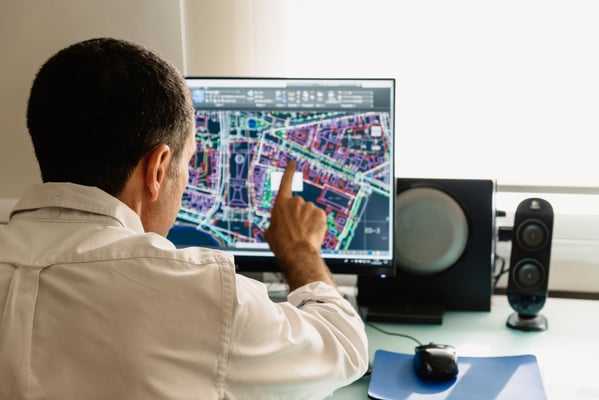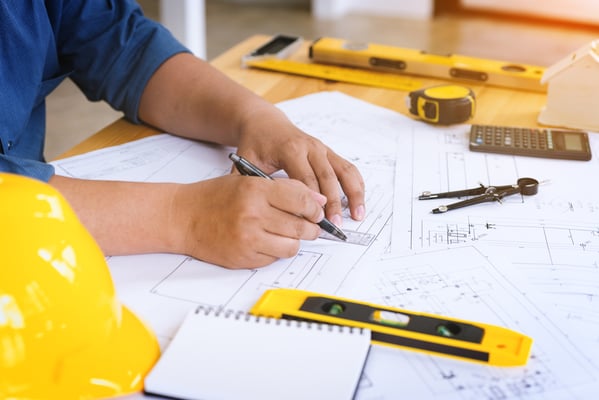How Project Turnaround Time Can Be Reduced?

A faster project completion is beneficial regardless of the building’s intended occupancy. In the case of real estate developers, a quick completion means that tenant spaces can be sold or rented faster. For owners who plan to use the building themselves, a fast turnaround means they can move out of their current location earlier. This brings direct savings if they are currently renting, or the opportunity to sell or rent if they own the previous building.
Complete your project on time and budget with professional construction management.
In theory, you can complete a building faster by hiring a larger staff or paying overtime. However, this approach also makes the project much more expensive. With the current COVID-19 pandemic, overtime and a large staff also increase the risk of infection. A smarter approach is optimizing the design and construction process, to speed up the project at a reasonable cost. There may also be opportunities to reduce project costs and lead times simultaneously.
Reducing Project Turnaround Time with Smart Design Decisions
The project design is often viewed as a necessary and unavoidable step to get a project approved and start construction. However, the design stage provides an opportunity for smart engineering decisions, which are beneficial not only during construction but also for building operation and maintenance.

When you work with expert design engineers, equipment layouts and specifications not only consider cost and performance but also ease of installation. Building Information Modeling can be used to find the optimal layout, and the installation process can be simulated to detect potential conflicts among trades.
By following a clash detection and resolution process, MEP engineers can detect issues before they reach the construction stage. Each conflict solved during the design stage represents a change order that will not be necessary during construction. Change orders waste materials and labor - they can make a project much more expensive while delaying its completion.
An optimized project design brings the following advantages:
- The design uses the least materials and man-hours possible while meeting the owner’s requirements. This also speeds up the project delivery, simply because there are fewer materials to install.
- The drawings and specifications consider the construction stage, avoiding layouts that create workflow conflicts among skilled trades.
- The project design meets local building codes on the first submission, or with minimal changes. Experienced MEP engineers know how to avoid multiple revisions with the local building department, getting the construction permit as soon as possible.
With the current health emergency caused by the COVID-19 pandemic, design engineers must also verify that materials and equipment are available before specifying them. Global supply chains have been disrupted, and materials or equipment that are difficult to purchase will delay the project.
The use of e-commerce in MEP design can also help optimize projects before construction. Engineering services can be ordered as itemized lists, which makes their cost more manageable and predictable. E-commerce also expands the payment options available for design services, reducing the time spent on payment processing.
Reducing Construction Time with Effective Project Management

An optimized building design is like an instruction manual for quick project delivery. However, the next step is making sure that design documents are followed during construction. Clear communication is key: before starting construction, the general contractor and all trade subcontractors must be familiarized with the design documents.
Coordination among skilled trades is critical to prevent delays and minimize conflict. Subcontractors must be familiarized not only with their scope of work but also with how it interacts with the tasks performed by other tradesmen. A kickoff meeting with all project participants is strongly recommended, to make sure everyone is on the same page. This is possible without meeting in person, thanks to modern design software and online collaboration tools.
The coronavirus outbreak has brought additional challenges in construction administration. However, technology can be used to complement social distancing measures, greatly reducing the infection risk:
- Supervision drones allow a detailed site inspection with minimal interaction in person. Supervisors can use drones to observe the project from viewpoints that are normally out of reach.
- Wearable technology can help implement social distancing guidelines. For example, wearable sensors can produce sounds or visual alarms when construction workers are not keeping enough distance.
- Digital construction documents can be accessed individually by site personnel, and there is no need to handle printed documents that could spread COVID-19.
Technology can help protect construction personnel from coronavirus. However, it can also make the overall construction process more efficient, while enhancing workplace safety. Technology helps with effective supervision and communication, which are key to ensuring that a project meets the design documents.

Michael Tobias
Michael Tobias, the Founding Principal of NY Engineers, currently leads a team of 50+ MEP/FP engineers and has led over 1,000 projects in the US
Join 15,000+ Fellow Architects and Contractors
Get expert engineering tips straight to your inbox. Subscribe to the NY Engineers Blog below.



